China's Chang'e-5 mission leaves Moon's surface
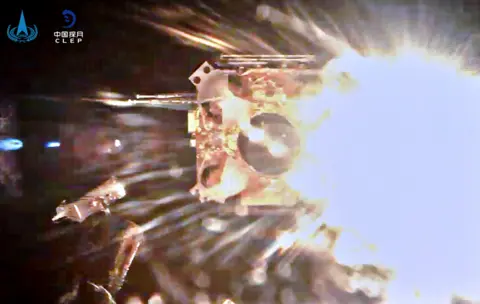 CNSA/CLEP
CNSA/CLEPChina has executed the next stage of its Chang'e-5 Moon mission, blasting into orbit samples gathered on the lunar surface.
Right on cue, at 15:10 GMT, an ascent vehicle lit its engine to head up to a service module that will shepherd home the rock and dust materials.
It's more than 40 years since lunar samples were last brought back to Earth.
Chang'e-5 still has some key steps to negotiate to achieve mission success.
The ascender has to rendezvous with the orbiter, and also pass over the samples.
These will be enclosed in a module that will be aimed at Inner Mongolia. This module will have to survive a fiery, high-speed descent through Earth's atmosphere to get to the ground.
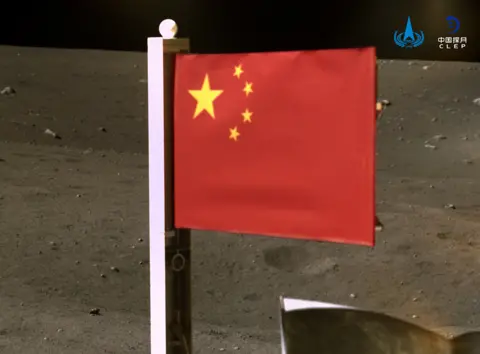 CNSA/CLEP
CNSA/CLEP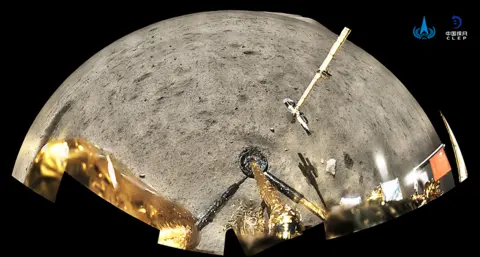 CNSA/CLEP
CNSA/CLEPChang'e-5 touched down on the Moon on Tuesday and immediately set about scooping and drilling nearby "soil", or regolith.
The landing hardware had comprised a powered descent system, which was left on the surface when the time came to leave.
Chinese TV broadcast the moment of lift-off from the Moon.
A camera placed on the surface landing mechanism, looking upwards, recorded the moment of ignition of the ascender's rocket motor and the rapid departure.
If controllers in China keep to the timeline that's been put in the public domain then the ascender's rendezvous with the service module should occur on Saturday (GMT).
Assuming this operation passes without incident, the samples should be back at Earth towards the middle of the month.
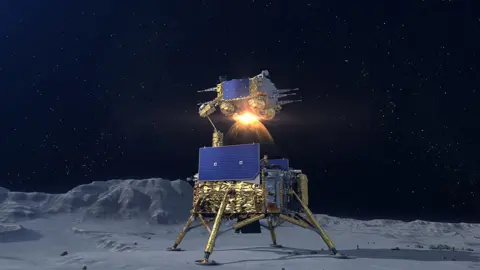 CNSA/CLEP
CNSA/CLEP

The last lunar sample return mission was in 1976.
A total of just under 400kg were picked up by American Apollo astronauts and the Soviets' robotic Luna landers.
But all these samples were very old - more than three billion years in age. The Chang'e-5 materials should be quite different.
The Chinese mission has targeted a high volcanic region called Mons Rümker. It's in the northwest of the nearside of the Moon.

Samples from this location may be no more than 1.2 or 1.3 billion years old, and, as such, should provide additional insights on the geological history of the Moon.
The samples will also allow scientists to more precisely calibrate the "chronometer" they use to age surfaces on the inner Solar System planets.
This is done by counting craters (the more craters, the older the surface), but it depends on having some definitive dating at a number of locations, and the Apollo and Soviet samples were key to this. Chang'e-5 would offer a further data point.
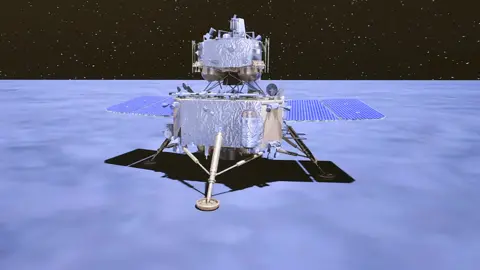 CNSA/CLEP
CNSA/CLEP[email protected] and follow me on Twitter: @BBCAmos
